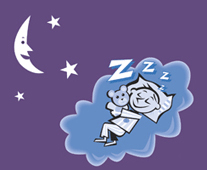Restless Leg Syndrome
Because of the nature of restless leg syndrome, this irritating and health-damaging sleep disorder can be difficult to diagnose.
It’s difficult to demonstrate the symptoms of restless leg syndrome during the day at a doctor’s office, but it is important to seek treatment if you suffer from it — the insomnia that this disorder causes can lead to a number of health complications. Here are a few signs you may have restless leg syndrome.
You feel a strong urge to move your legs you may not be able to resist
People who feel this urge say the need to move their legs is often accompanied by uncomfortable sensations. Some words used to describe these sensations include creeping, itching, pulling, tugging, or gnawing.
This is one of the criteria necessary for diagnosis, so if you don’t have it, you may not have restless legs syndrome.
The uncomfortable sensations go away when you move your legs
The relief can be complete or only partial but generally starts very soon after starting an activity.
Relief persists as long as the movement continues. This is also one of the criteria necessary for diagnosis.
Your symptoms start or get worse when you’re at rest
The longer you are at rest, the greater the chance the symptoms will occur, and the more severe they are likely to be.
Your symptoms get worse in the evening
Your symptoms getting worse in the evening is another one of the criteria necessary for a restless leg syndrome diagnosis.
If your symptoms aren’t worse at night, it may not be restless leg syndrome. Some people with restless leg syndrome, however, can have severe daytime symptoms as well.
What You Can Do
Movement such as walking will offer temporary relief from symptoms, but you may have difficulty relaxing as soon as you get back to bed.
Therefore, it is necessary to work with an accredited sleep center to find more long-term solutions that will help you get the sound sleep you need each night. Here is a look at the process of planning treatment for RLS at Zeeba Sleep Center.
Choosing medication
Several types of medication may offer relief from RLS. Muscle relaxers, opioids, and sleep medications can all work to help you relax for better sleep, but each of these drugs can be habit forming, so they will not be prescribed for extended periods.
Longer term medication solutions could include drugs used primarily for epilepsy treatment and Parkinson’s treatment.
These work by altering the chemical interactions of the nervous system so that symptoms in the extremities are reduced over time.
It is important to discuss all your options for medication with the doctor thoroughly, as every patient may have unique preferences and reactions to certain drugs.
Changing daily routines
Even if medication is chosen as part of your long-term RLS therapy, lifestyle changes will still be an important aspect of managing your condition.
Simple steps like exercise and relaxation techniques can help you prepare for a more peaceful night’s rest each night.
Sleep hygiene is also an area to improve by creating a dark, cool, quiet sleep environment and maintaining a regular schedule for your sleep.
Checking in with the doctor
It can take some time to find the specific remedies and changes that will offer you relief, so you should maintain regular visits to your doctor to continue discussing treatment.
RLS Resources
If you suffer from restless leg syndrome, the sleep experts at Zeeba Sleep Center can help you get a good night’s sleep.
We are the only accredited sleep center in Las Vegas, so give us a call today at (702) 242-1562.
Zeeba Sleep Ceneter is accredited by the American Academy of Sleep Medicine and has board-certified sleep physicians providing comprehensive sleep diagnostic and treatment services.
American Academy of Sleep Medicine
3425 Cliff Shadows Pkwy, Las Vegas, NV 89129
Call Us Today (702) 242-1562
Copyright © 2025 Zeeba Sleep Center All rights reserved.
